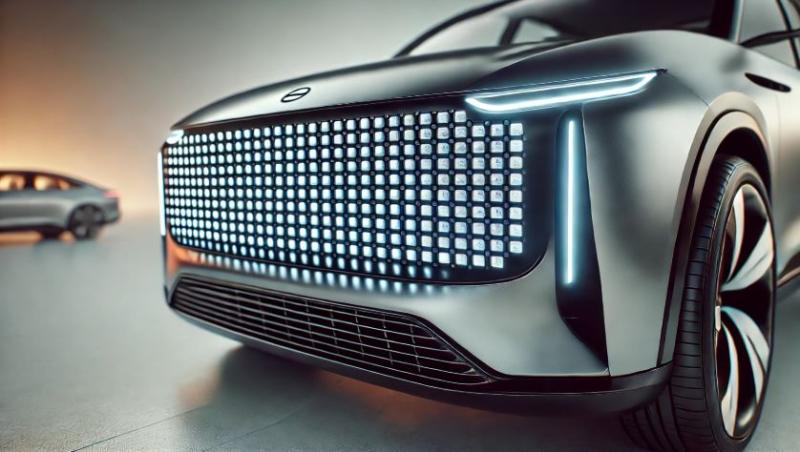Natural gas vehicles (NGVs) are becoming an important part of Nigeria’s move towards cleaner, more affordable transport options. Given the recent focus on sustainable mobility, especially with the Presidential Initiative on Compressed Natural Gas (Pi-CNG), Nigerians are beginning to hear more about CNG-powered vehicles. But how do these vehicles actually work? Let’s break it down.
Natural gas vehicles (NGVs) operate very similarly to the fossil-fuel cars many Nigerians are familiar with. The key difference lies in the fuel source—CNG. These vehicles still have internal combustion engines (ICE), but instead of running on petrol, they use natural gas stored in a compressed form. The fuel tank, typically found at the back of the vehicle, holds natural gas at high pressure, usually around 200 to 250 bar.
When it’s time to drive, the CNG fuel system transfers the gas from the fuel tank through a series of fuel lines. A pressure regulator steps in at this point to reduce the high pressure to a level that the engine’s fuel injection system can handle. The gas is then injected into the engine, where it mixes with air before being ignited by a spark plug—just like in a petrol engine. This combustion process powers the engine, allowing the vehicle to move.
Key Components of a Natural Gas Vehicle
Understanding how NGVs work starts with knowing their essential components. Here’s what keeps a CNG-powered car moving:
Battery: Just like in petrol cars, the battery provides the electricity needed to start the engine and power other electronics in the vehicle. Think of the battery as the initial push that gets your car going.
Electronic Control Module (ECM): This is like the vehicle’s brain. The ECM ensures that the fuel mixture is perfect, the ignition happens at the right time, and the emissions remain within acceptable levels. It constantly monitors the vehicle’s performance and helps detect any issues before they become major problems.
Exhaust System: Just like in petrol vehicles, the exhaust system channels gases out of the engine and through the tailpipe. In CNG vehicles, this system includes a three-way catalyst designed to minimize harmful emissions, making the exhaust cleaner than what we see in petrol or diesel vehicles. Cleaner emissions mean a reduced environmental footprint—a big advantage for densely populated cities in Nigeria.
Fuel Filler: When refueling a CNG vehicle, a nozzle from the fuel dispenser attaches to a specific receptacle on the vehicle. This is where you fill the tank with compressed natural gas. In Nigeria, CNG filling stations are still being developed, so it’s essential to know where they are located. More stations are expected to emerge under the Pi-CNG.
Fuel Injection System: Once the pressure has been reduced by the regulator, the CNG is injected into the engine’s combustion chambers, where it is mixed with air. This is similar to how petrol is injected into an internal combustion engine, but the fuel is natural gas instead of liquid petrol.
Fuel Lines: These are the tubes or hoses that transfer the natural gas from the fuel tank to the engine. The gas travels under high pressure, so the lines must be strong and durable to handle the task.
Fuel Tank (Compressed Natural Gas): This is the heart of the CNG vehicle’s fuel system. The tank stores compressed natural gas at high pressure until the engine needs it. The tanks are typically made from high-strength materials to ensure safety, as they must handle gas stored at very high pressures.
High-Pressure Regulator: Before the natural gas can be used by the engine, its pressure must be reduced to a level that the engine can handle. The high-pressure regulator plays this critical role, ensuring that the gas flows smoothly from the tank to the engine’s fuel injection system. This device is designed for efficiency and safety, minimizing the risk of overpressure in the engine.
Internal Combustion Engine (Spark-Ignited): In CNG vehicles, the internal combustion engine works much like it does in petrol-powered vehicles. The natural gas is mixed with air and ignited by a spark plug. The big difference is that natural gas burns more cleanly than petrol, meaning fewer emissions and better overall efficiency.
Manual Shutoff Valve: For safety reasons, there is a manual shutoff valve that allows drivers or mechanics to stop the flow of gas in emergencies or during maintenance. This valve ensures that any issue with the fuel system can be quickly controlled.
Natural Gas Fuel Filter: This component is essential for keeping the engine and fuel system clean. The fuel filter traps any contaminants or byproducts that may be in the natural gas before they reach critical parts like the fuel injectors. This prevents clogging and keeps the vehicle running smoothly.
Transmission: Just like in petrol vehicles, the transmission in a CNG vehicle transfers power from the engine to the wheels. It ensures that the vehicle can move at different speeds and handle various driving conditions.
Why CNG Vehicles Make Sense for Nigeria
Nigeria is abundant in natural gas, yet for many years, we have relied heavily on petrol imports to meet our transportation needs. The shift to CNG vehicles makes sense for us because we have vast natural gas reserves that can be harnessed for domestic energy use.This would reduce our dependency on imported petrol and also help lower fuel costs for Nigerians in the long run.
Furthermore, CNG vehicles could play a huge role in reducing urban pollution. Many cities in Nigeria are already dealing with the consequences of pollution from petrol vehicles, which contributes to poor air quality and associated health problems. A shift to CNG could lead to cleaner air and better living conditions for Nigerians.


